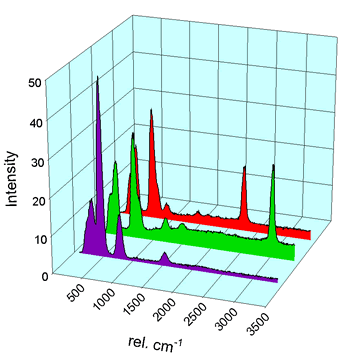Upper Division Lab Development
Chemistry 116ABCL
Instrumentation
The forefront of science today exists at the boundaries of many of the traditional fields of chemistry. As science changes from traditional fields to multidisciplinary efforts both at the industrial and academic level, it is imperative we prepare our students accordingly for successful careers by updating our curricula. Furthering this need for curricular development, there is an alarming trend nationwide that as science becomes more interdisciplinary, scientists have become more reliant on automation. Scientists often lack the knowledge about both the instruments and the science behind the measurements they depend upon. The tendency is to view instruments simply as "black boxes" and data as statistically meaningful regardless of the limitations of the analytical methodology. This trend is propagated in current curricula through the emphasis of outdated analytical methods and simply teaching techniques, rather than the science behind the analytical methodology.
At UC-Santa Barbara we are eliminating this problem by the development of an integrated approach to the junior and senior laboratory courses where the curricula includes the teaching of instrumental methodology as part of a 'block strategy' centered around a specific scenarios often encountered in the analytical laboratory. This approach has been well-received both by students and employers of our chemistry and biochemistry graduates, and has the potential for implementation in the chemistry and biochemistry curricula as a whole. The scenario strategy represents an overarching change in the mentality of teaching, not just a shift in teaching paradigms, which we believe will significantly improve the quality of students at UCSB and their future potential as leaders in science.
Funding and Developments
2004 - The Camille and Henry Dreyfus Foundation (www.dreyfus.org) has awarded a grant of $28,800 to Dr. Leroy Laverman and Dr. Alec Wodtke under the "Special Grant Program in the Chemical Sciences" project. These funds will be used to purchase a pulsed laser for development of time resolved and cavity ringdown spectroscopic instrumentation in the undergraduate laboratory.
2003 - Chemistry 116AL is offered for the first time. The current laboratory proceedures are available by following the "Chem 116" link at the above left. Analytical blocks include the analysis of Mn in steel and Cu and Pb in brass.
2003 - The Dean of the Math, Life and Physical Sciences division of the College of Letters and Sciences has awared $50,000 in funding to improve laboratory instrumentation and infrastructure to facilitate the implementation of the Chemistry 116 laboratory series. A new atomic absorbance spectrometer and synthesis apparatus will be added with these funds.
2002 - Instructional Developement Grant. Funding has been awarded by the UCSB Office of Instructional Consultation (www.id.ucsb.edu) for undergraduate and graduate student stipends. The selected students will test new experimental methods for the new Chemistry 116 laboratory series.
2002 - The Department of Chemistry and Biochemistry has announced plans to revamp the upper divison laboratory courses. A new lab sequence (Chemistry 116) is being developed to integrate analytical and physical chemistry with inorganic synthesis. The three quarter laboratory sequence will begin in the winter 2003 quarter. The new series supplant the existing Chemistry 150L, 113BL and 113CL lab courses.
2001 - We are pleased to announce that the Camille and Henry Dreyfus Foundation (www.dreyfus.org) has awarded a grant of $30,000 to Dr. Geoff Strouse and Dr. Leroy Laverman under the "Special Grant Program in the Chemical Sciences" project. This grant was augmented by matching funds from the College of Letters and Sciences for an additional $17,000. This money will be used to purchase modern instrumentation for the upper division laboratory courses and to provide summer support for the development of new integrated laboratory experiments. We plan to add fluorescence, UV-Visible, Raman and time resolved emission capabilities to our growing arsenal of instrumental methods.
Instrumentation
Many new instruments have been added to our undergraduate analytical laboratory since 2001. The analytical / physical chemistry laboratory has the following instruments.
Undergraduate Instrumentation
- Laser Raman Spectrometer
- Time resolved absorbance spectrophotometer
- Time resolved emission spectrophotometer
- Spectrofluorimeter
- UV-Visible spectrophotometer
- two capillary GC's (FID detection)
- packed column GC (TCD detection
- GC-MS
- Flame ionization atomic absorbance
- two pH / ISE meters
- magnetic susceptability balance
- two electrochemistry potentiostats
- high resolution FTIR
- bomb calorimeter

The three spectra above are Raman spectra of CCl4, CHCl3 and CDCl3. Which is which?
